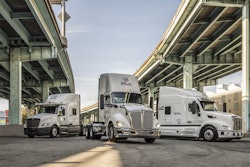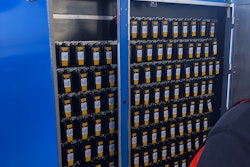
Staffing shortages are a perennial concern in freight and logistics. Even before the turbulence spurred by COVID-19, fleets had been looking for new ways to combat the driver shortage. In fact, the American Trucking Association’s Driver Shortage Analysis suggests that if the current path holds there will be a need for nearly 160,000 drivers by 2028.
It’s encouraging to see the industry, and its lawmaking partners in the United States Congress, find new ways to attract and develop the next wave of drivers from Generation Z.
Historically, fleets have been limited by the regulation that prohibits drivers under 21 years old from crossing state lines. The DRIVE-Safe Act is a bipartisan bill currently under consideration by Congress that would ease these restrictions for individuals through a two-step apprenticeship program. This is certainly a step in the right direction for driver hiring, as currently written, yet the bill doesn’t fully address the issue of safety behind the wheel for younger drivers with limited experience.
This begs a question: how can fleets take advantage of the Drive-Safe Act while reducing potential risk on the road for drivers and bystanders alike?
The answer comes via advancements in fleet safety technology, which include access to better analytics and artificial intelligence (AI). When deployed correctly these tools can help bridge the skill gap for new drivers to hit the road safely and confidently. Here’s how:
Development Strategy Through Analytics
Every fleet has its own approach to training and development. Through the onboarding process, managers are able to assess skill levels, determine where gaps exist and deploy recommendations for drivers to meet organizational safety standards. A fleet manager can expect experienced drivers to have certain core competencies, but there’s no telling what level of skill that new, younger drivers enter the field with. From a resource perspective, it can be time intensive to get this young community on the same page.
The goal is to make training and development much more scalable. This can be done by reframing how analytics is applied to gathering data and using it to identify trends and glean key insights. The analytics are fueled by the initial performance of new drivers to reveal areas where they are succeeding and where improvement is needed. From this a baseline can be created to learn and grow from.
Rather than taking a blanket approach and offering redundant trainings, fleet managers can be much more targeted in the way they design early development learning paths to be the most effective. Drivers get exactly the guidance they need, accelerating the timeline for improvement.
Taking a data-driven approach is a powerful strategy for your business. With each iteration the impact of the recommendation improves. The more data that is available, from both individual drivers and the community as a whole, the smarter the insights become. For DRIVE-Safe to be a long-term solution, it needs a corresponding long-term strategy.
Real-Time Coaching Through AI
Developing a strong, data-driven training strategy goes a long way in preparing first-time drivers for a career, but it can never account for real-world experience. Eventually, every young driver will need to start their first route. Tools are available to offer guidance and recommendations that could be potentially lifesaving. When AI is paired with dual-facing video dash cameras, intelligent monitoring and other sensors, it can glean a real-time understanding of driver behavior and external road conditions. Armed with this information, AI and in-cab coaching can flag behaviors and identify distractions that can be corrected before an accident occurs.
The goal of these solutions isn’t to create an omnipresent backseat driver (or big-brother phenomenon). Rather, it is to create a sustainable in-cab system for further skills development. Technology can encourage greater driver participation, so they feel invested in their own growth and see measurable progress as they move forward early in their career. In the absence of real-world experience, technology eases new drivers into the nuances of trucking without leaving them on their own to succeed or fail.
Driving Safe, Regardless of Age
For logistics and freight, sustainable industry-wide growth hinges on a healthy pipeline of new drivers, each with best-in-class training and resources. As fleets digitize by integrating new technologies to improve efficiency and drive revenue, a tremendous opportunity exists in recruiting a generation of Digital Natives. In this, DRIVE-Safe may in fact go far in addressing the driver shortage. Underpinned by the right technology, drivers of all ages are poised to reduce risk and increase success.













